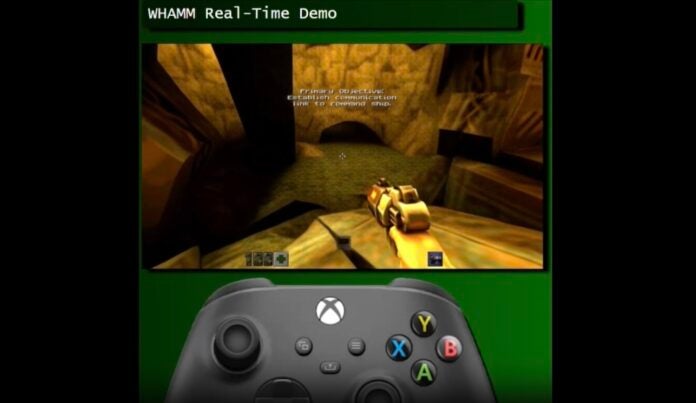Microsoft announced on April 4 its new generative AI model for gaming called WHAMM (World and Human Action MaskGIT Model), which is capable of supporting real-time gameplay.
WHAMM is an updated version of the original WHAM-1.6B model and has significantly faster visual output. It can generate images at over 10 frames per second — a substantial step up from WHAM-1.6B, which could generate only about 1 image per second. Microsoft also increased the resolution of WHAMM’s output to 640×360, an enhancement compared to the WHAM-1.6B model output of 300×180.
Training on Quake II with intentional data curation
The announcement included a free demo of WHAMM trained on Quake II, a first-person shooter game with faster pacing than Bleeding Edge, the game used to train WHAM-1.6B. Microsoft’s adaptation of the WHAM structure to this new game was accomplished using only one week of training data for the WHAMM model. The company says that it administered more intentional data curation and collection, decreasing the quantity of gameplay data for model training by working with professional game testers to collect high-quality data.
The new model has enhanced performance and can track existing environments and adapt to user input simultaneously, giving it more speed and responsiveness than previous versions. Players provide input using their controllers or keyboards, and the model dynamically updates the game environment to respond appropriately.
Microsoft’s stated limitations of WHAMM
WHAMM is still new, and Microsoft noted it has some areas where AI could improve. The game struggles with accurately storing stats, and its input lag can negatively influence smooth gameplay. Currently, the AI model is limited in its application, as players can only use it within playable regions of the Quake II map. Microsoft’s announcement also highlighted other shortcomings, including unclear enemy interactions, short context length, and latency issues.
While this new model may still be in its infancy, the AI’s accelerated rate of advancement could mean that entirely AI-generated video games could be a thing of the future.
